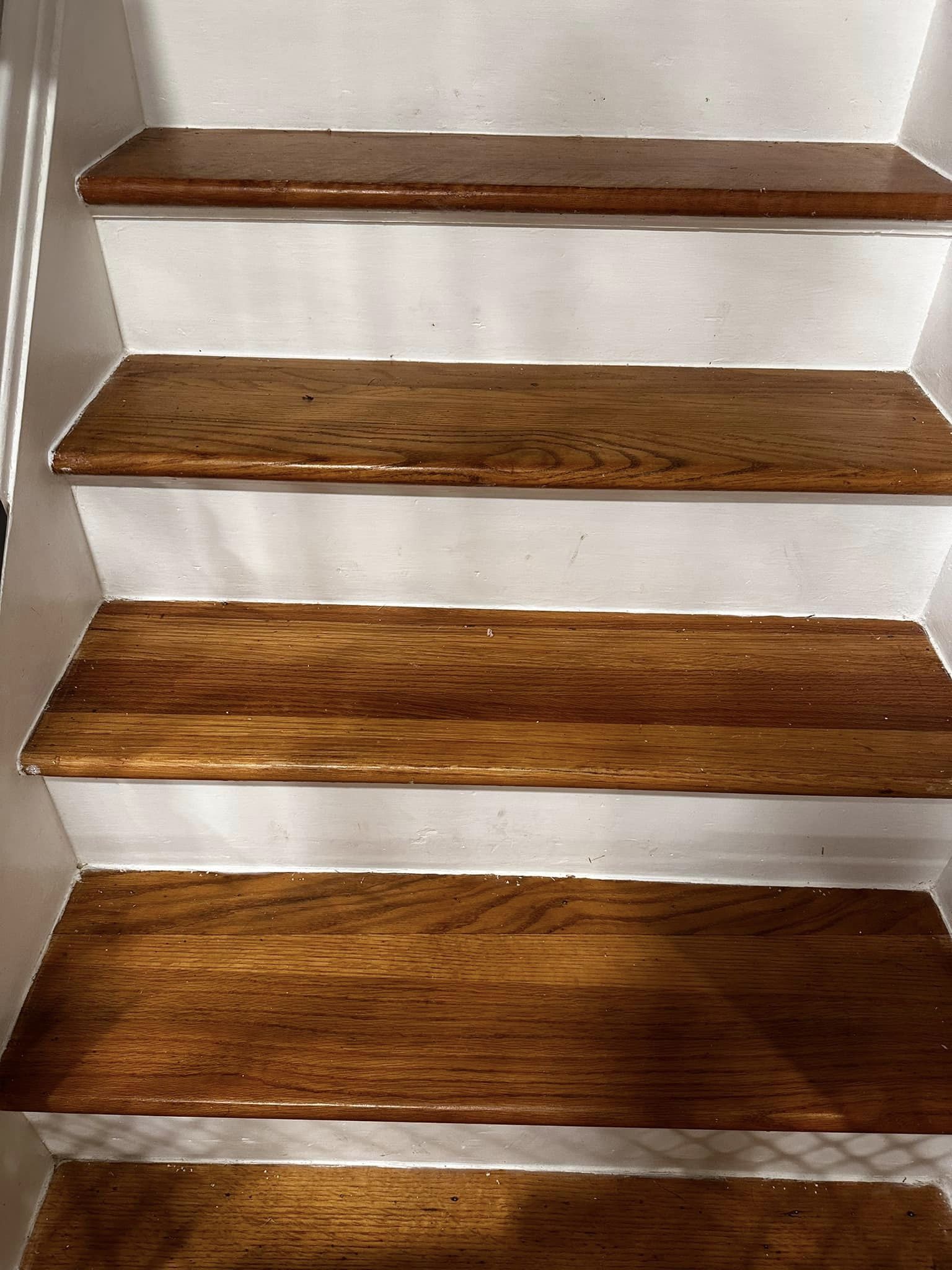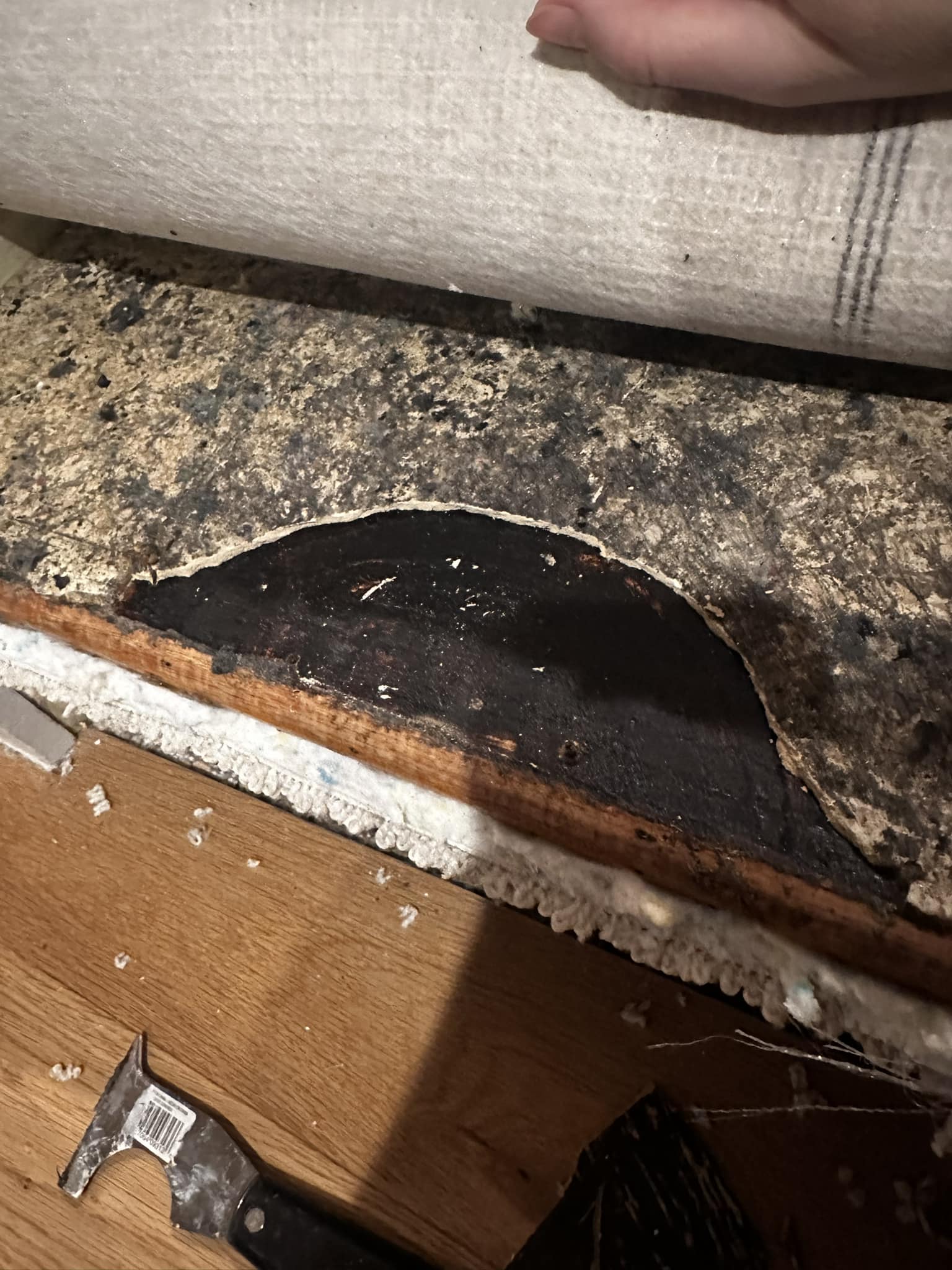How can I safely remove black residue from glued-down wood on my stairs without sanding?
1 year ago
Last Updated: June 13, 2024
We’re redoing some parts of the house and I started peeling back the carpet on the stairs. I found wood underneath, which got me pretty excited. But then I discovered that some parts were really stuck down with glue. I managed to remove some of it, but now there’s this black residue left behind. I don’t think it’s mold, probably just old glue. Any idea how I can get rid of the black stuff? Do I have to sand it down, or is there another way to clean it off? I can show you a picture of my other stairs that I think are made of the same wood.



Blake adhesive may indicate the presence of asbestos. It’s a good idea to have it tested to ensure safety.
Hey, I think there’s a possibility that the material was installed prior to 1990 might contain asbestos. It would be a good idea to conduct a test before disturbing it.
Some contractors, like , even used asbestos-containing materials that were in stock after the specified date. When in doubt, it’s best to be cautious.
Definitely . I really like asbestos, to be honest. Can you find me another material that’s moldproof, fireproof, insulative, affordable, and natural? Just please don’t scratch and sniff.
You’re correct, it’s the most adaptable mineral out there, it’s a shame the fibers pose a health risk
Place a very wet washcloth on it for about 20 minutes and check to see if it softens…that’s what worked for me and it cleaned up really well.
Placed an old steam iron on that washcloth and it should come off in just a couple of minutes
I did mine like this and it was so easy. About one soak was about the same amount of time it took me to scrape one section
Give a carbide scraper a shot and see if that does the trick.
The black tar-like adhesive is known as mastic and can become quite tough with age.
Seems like there’s also some old linoleum, a portion of which may contain asbestos.
Absolutely, , that black glue is concerning.
Try heating up some amole, prying it off, and then sanding. That’s all the advice I have at the moment.
Assuming it is asbestos, as some comments suggest, is there a safe way to get rid of it or am I limited to having carpet?
Mentioned that most states have guidelines for asbestos removal on their department of health website. However, they are so strict that it’s often impractical for most people (requiring airtight sealing of the room, creating a clean room, full body PPE, respirator, etc.). If any step is not done perfectly, it can increase the risk of exposure. Therefore, the easiest (although expensive) option would be to hire a professional asbestos removal company.
If it’s mastic, a Bissell hand-held steamer should be able to remove it. Just keep in mind the potential presence of asbestos, as others have mentioned.
Heat up the tar paper, scrape off as much as possible, then sand and apply stain.
It appears to be an older layer of linoleum with black adhesive beneath it. Try using heat to soften it and then scrape it off.
While it’s been a while, it’s true that old linoleum often contains asbestos. There are several precautions to consider when removing it. How difficult would it be to replace the tile on the treads if only one has it?
This product can even strip off both the linoleum and your skin.
You might want to consider using a heat gun as well